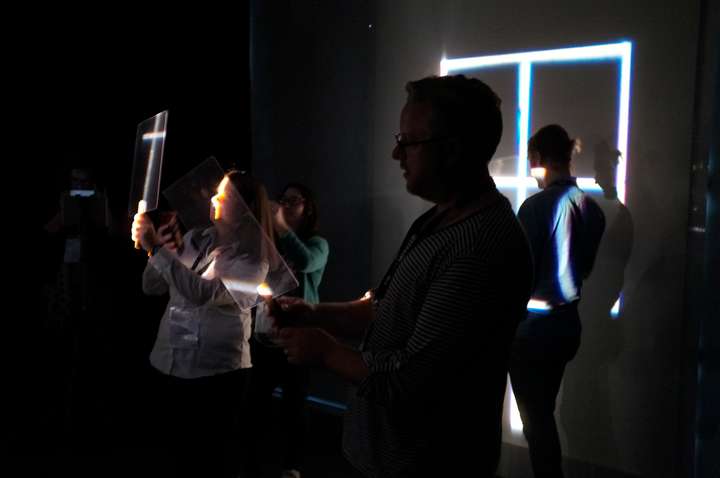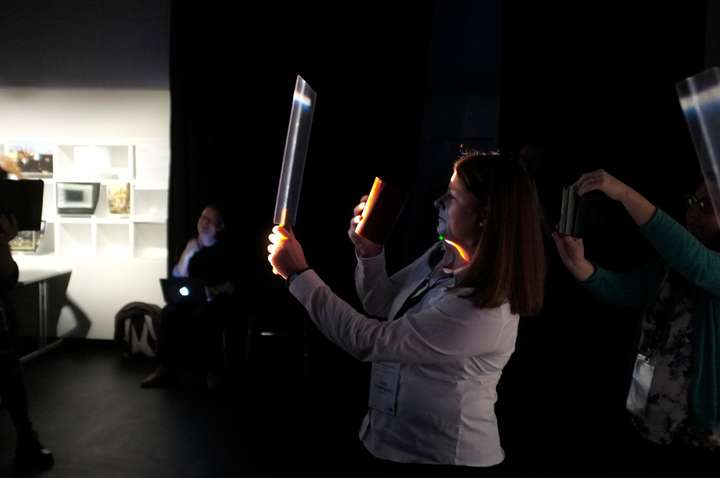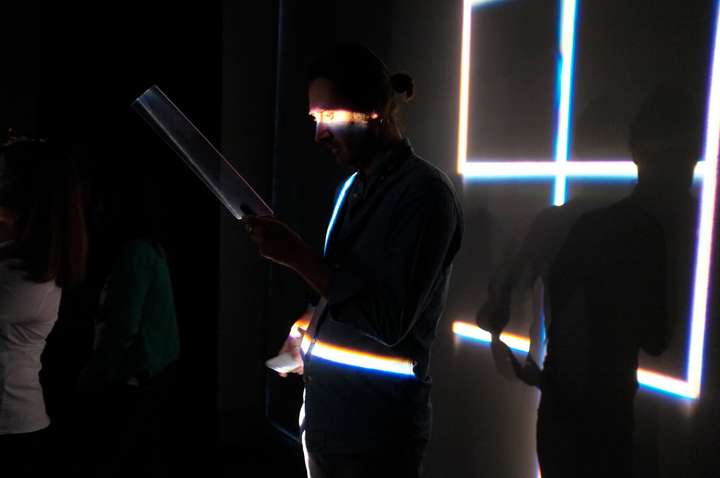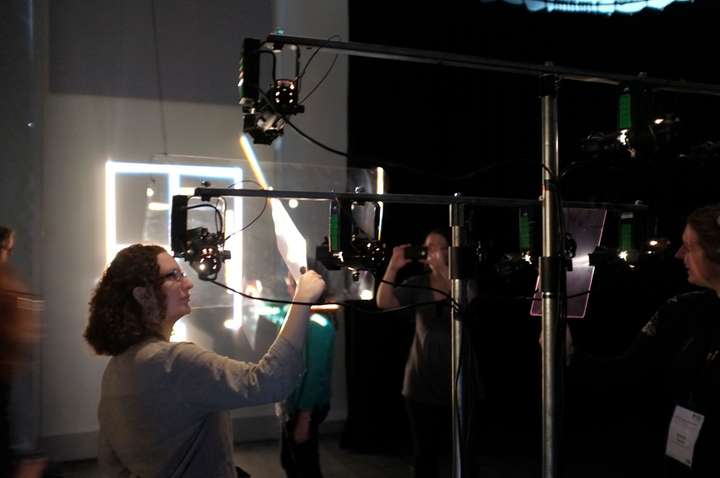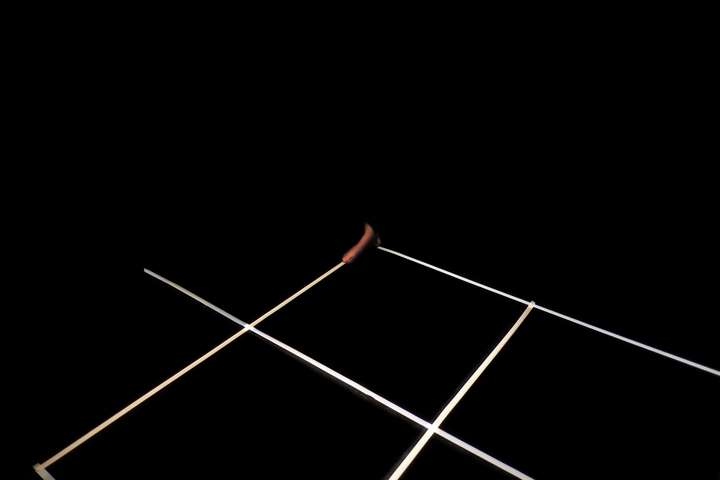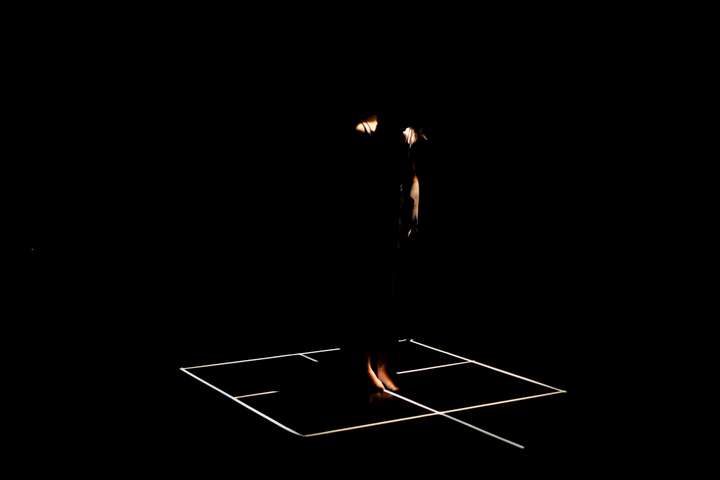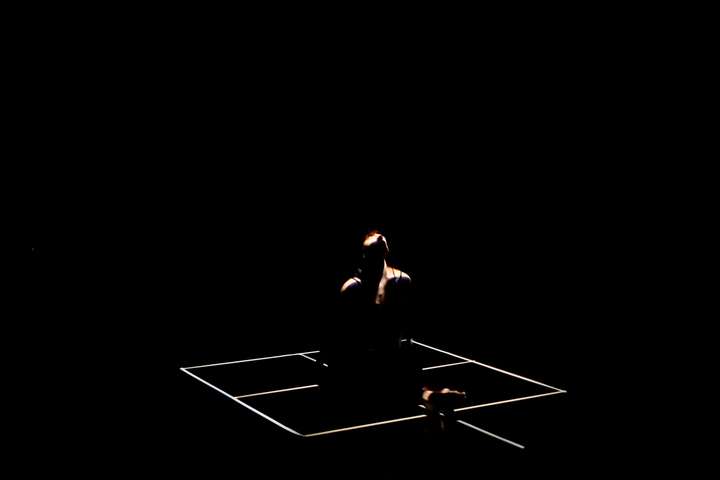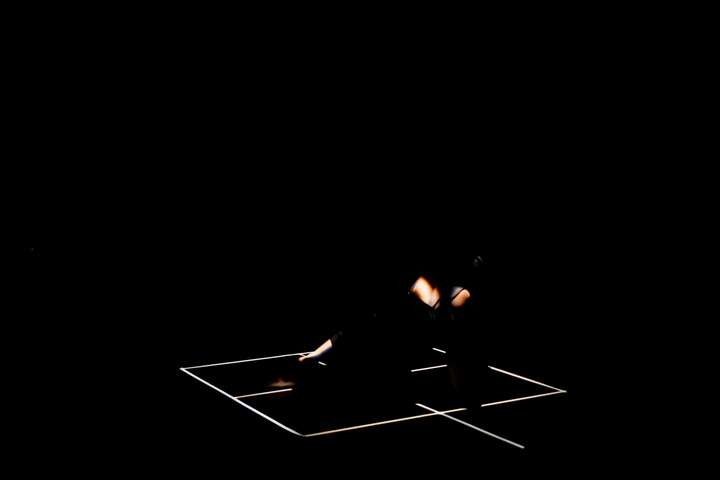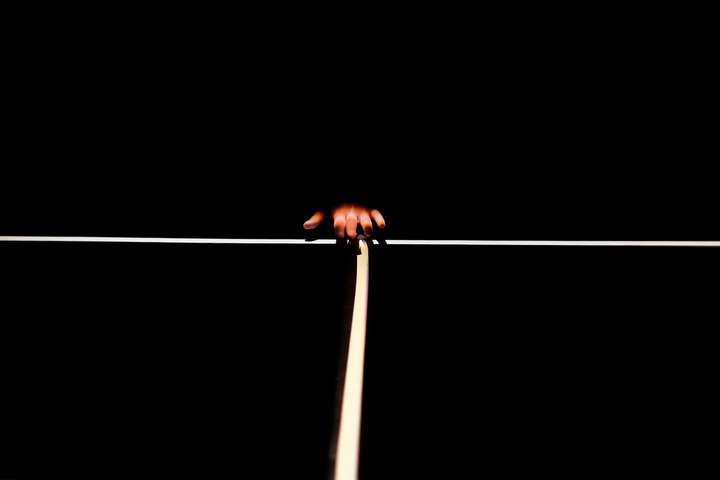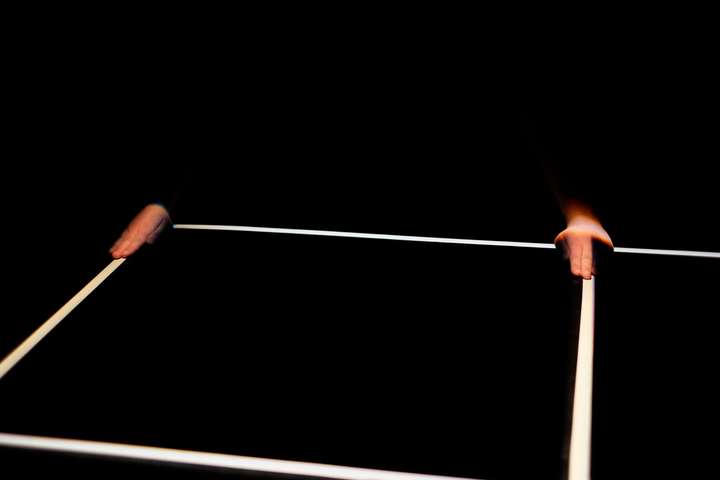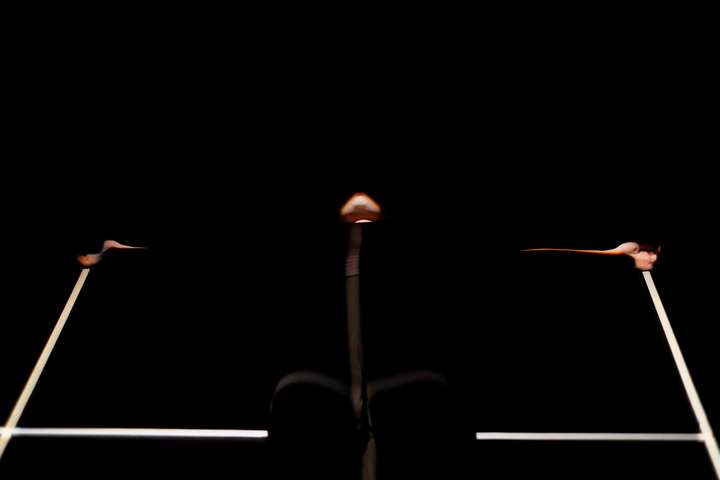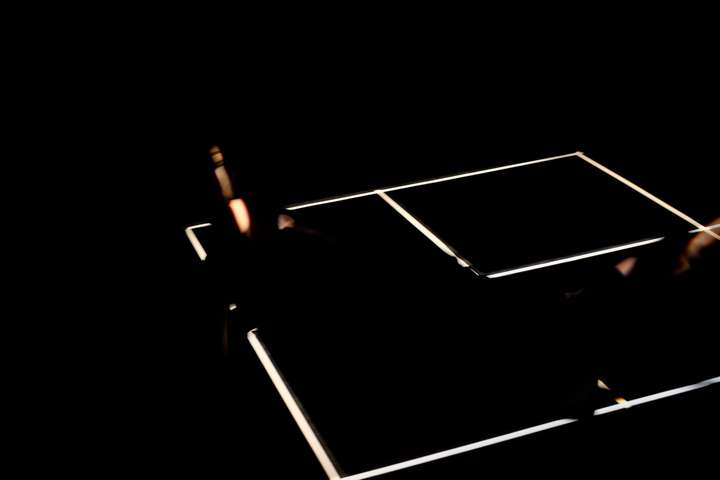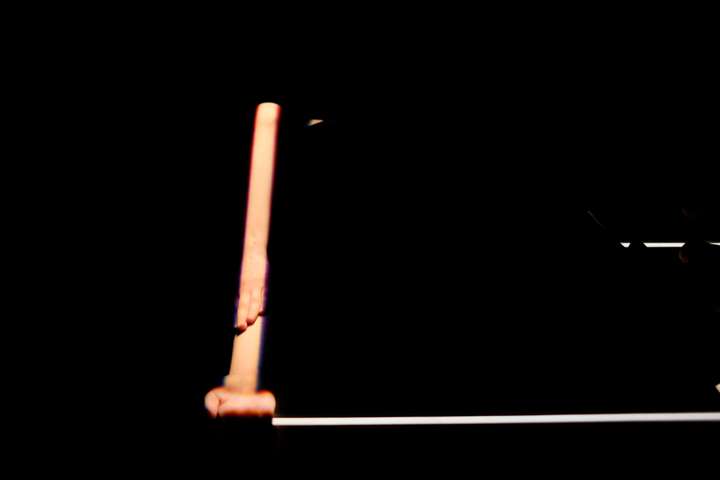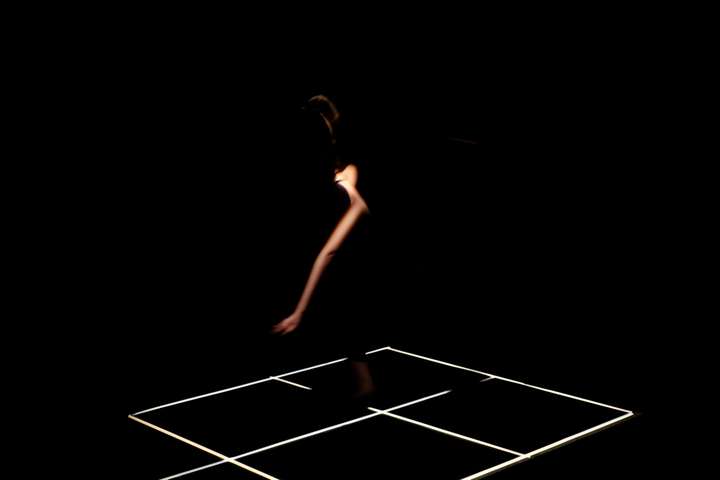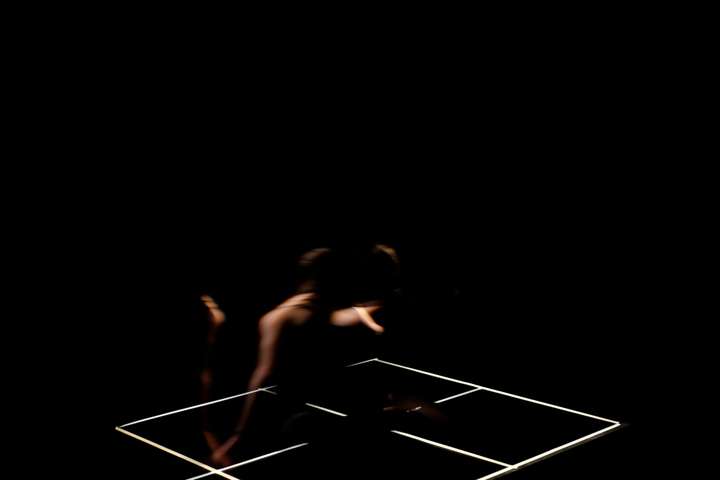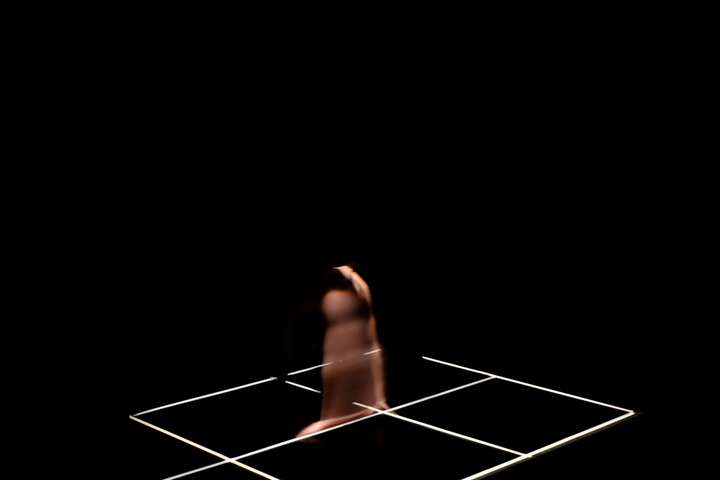
Traces
Traces is an interactive light installation by Nick Hunt and Hansjörg Schmidt, initially created for the Performing Light symposium at the University of Leeds in 2017. Since its initial appearance in Leeds, Traces has been recreated in a variety of forms, changing in scale and technical implementation, and in some instantiations including a performer/dancer as a surrogate participant. Arising from the Library of Light project at Rose Bruford College, Traces began as a response to the challenge of capturing and archiving light’s role in the experience of seeing. As it has developed, Traces has become an artistic work in its own right, as well as an action-research investigation.
Traces is an apparatus for seeing, thinking and communicating experiences of light, which draws participants’ attention to their own situated presence in a visual encounter with the physical world. Traces prioritises experiential exploration and discovery over abstract, rationalized thought, embodying a research methodology particularly suited to the investigation of light and its often taken-for-granted role in everyday experience. Traces is also a vehicle to investigate the experience of seeing as situated, embodied and unstable. The kind of sensitivities and sensibilities an apparatus such as Traces can engender in its participants are foundational for those working creatively with light in performance, and indeed for audiences. Further, Traces proposes a methodology for future research into the experience of seeing, and the affective role of light in the performance encounter.
Traces - the installation
Imagine a blacked-out room. The floor is marked out with white tape: a rectangle, between 3 and 5 metres long, divided into four smaller rectangles. A further line extends out from the middle of one short side. From overhead, tightly shuttered lights pick out the tape lines without lighting the remainder of the floor. The light beams are invisible in the air, and the tape seems to glow of its own accord. To one side, a table, carrying several viewfinders, each comprising a piece of clear Perspex the size of an A4 sheet of paper, with a handle to hold it by. You have entered the space of Traces...
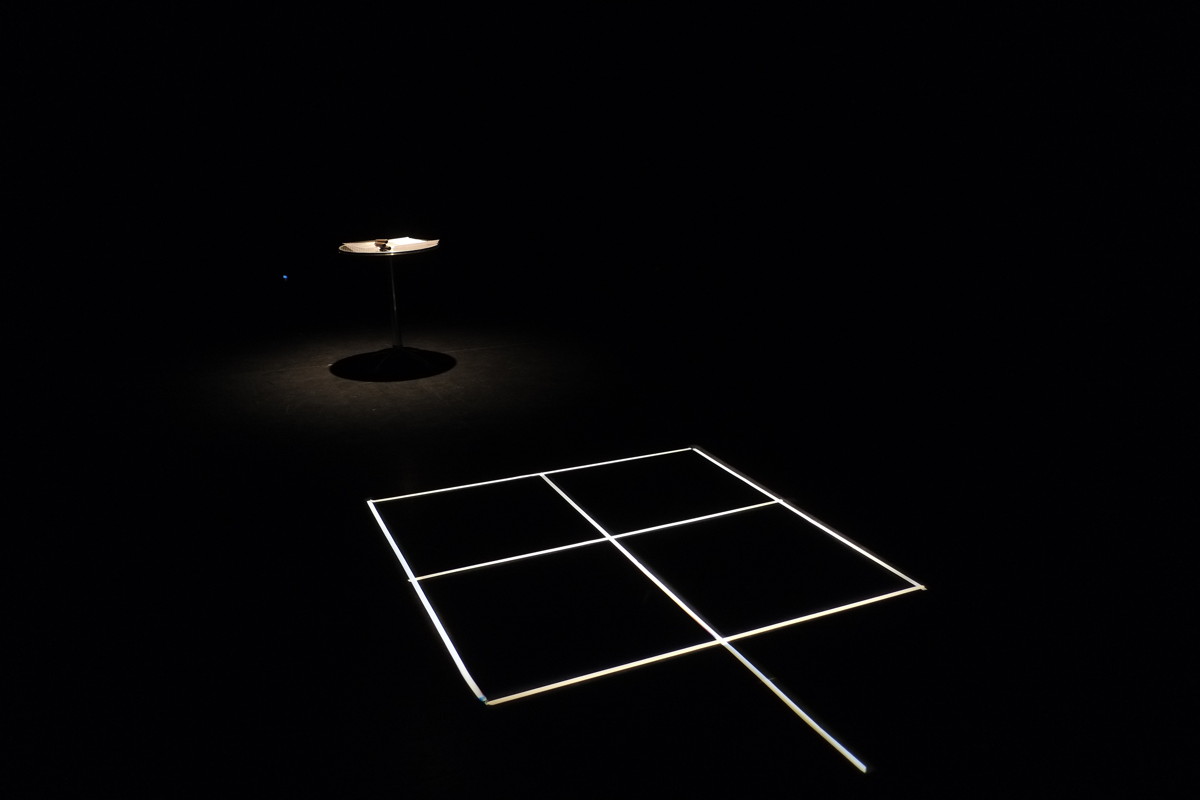 |
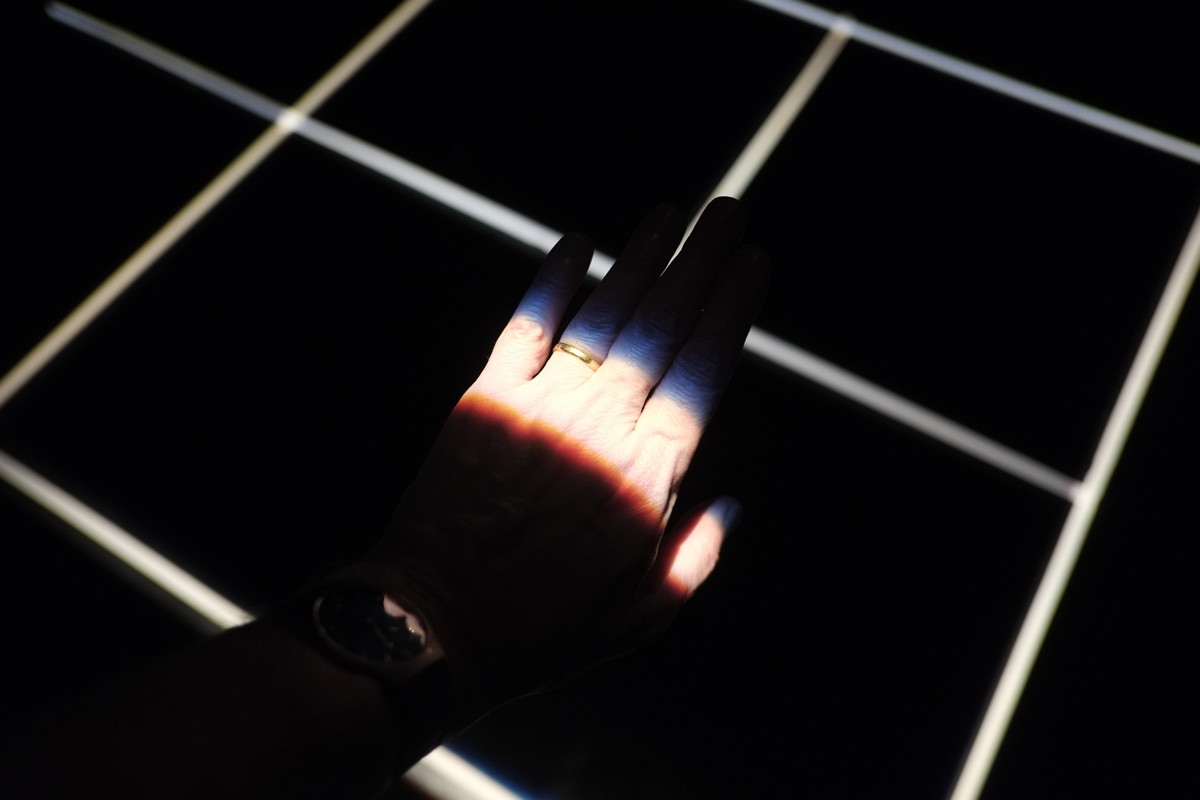 |
Traces with people
People interacting with Traces at the TaPRA conference, 2017. In this version, the grid was projected horizontally, onto the wall. Participants use the viewfinders to composite an image, partly seen through the viewfinder, and partly reflected in it. They are then invited to photograph and share what they can see with their phones.
Traces with a performer
Lill Worden performing in the Traces space, at the Rose Bruford College Symposium, 2018:
Presentation and publication of Traces
Traces has been presented six times:
- Performing Light symposium, University of Leeds, UK, January 2017, in the Alec Clegg studio theatre. See a short video introduction to Traces, recorded at the symposium (starts at 4 minutes 12 seconds).
- Rose Bruford College annual Symposium, April 2017, in a small lighting laboratory.
- Theatre and Performance Research Association conference, University of Salford, August 2017, in a lecture room, with the grid projected onto a wall.
- Rose Bruford College annual Symposium, April 2018, in a theatre studio space, with a dancer/performer, Lill Worden.
- ART IN FLUX: Experiments in Media Arts Now exhibition, The Ugly Duck, London, UK, June 2018, presented as both an interactive installation and a performance with a dancer/performer.
- DocPerform3 conference, City (University of London), London, UK, May 2019, presented horizontally as at TaPRA.
Traces is also the subject of a chapter, written by Hansjörg Schmidt and myself, in Contemporary Performance Lighting: Experience, Creativity and Meaning (Eds. Katherine Graham, Scott Palmer, Kelli Zezulka), Bloomsbury Publishing, 2023.
